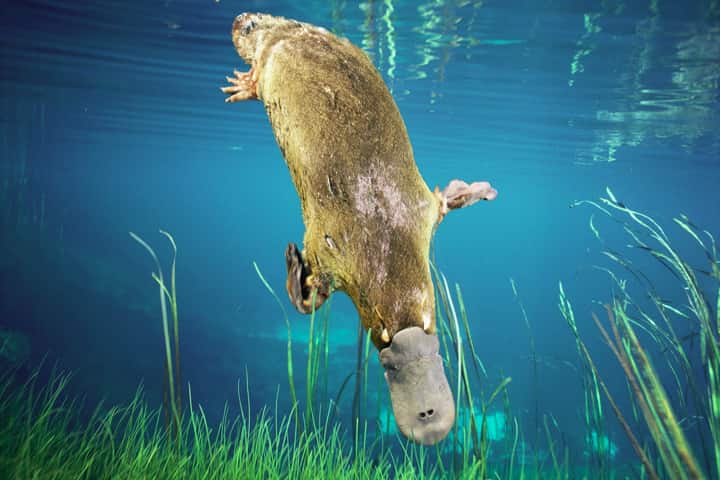

The unusual egg-laying mammals duck-billed platypus have been reintroduced in the Royal National Park, Australia (Pic. Courtesy Twitter/@DrDarrenRFlower)
It was once declared to be a weird and a hoax creature when it was discovered by the Europeans but today efforts are on to conserve the duck-billed platypuses. They are indeed special as they are egg-laying mammals.
After nearly five decades, these animals have been released in the world’s second and Australia’s oldest national park, the Royal National Park in New South Wales which was established in 1879, in a major initiative to repopulate them as per a smithsonianmag.com report.
The Park should be able to support a group of 10 platypuses as it has abundance of food to offer including shrimp, caddis fly larvae, dragonfly nymphs among others.
So far four females have been released with plans on the anvil to introduce two more females and four males in the future, said a statement issued by University of New South Wales. From 1970s onwards these mammals haven’t been sited in the park which scientists attribute to the chemical spill that took place then which resulted in their vanishing.
This release which has come after several years of extensive and meticulous planning is expected to re-establish the platypuses. For this the conservationists are working hard to prepare the local ecosystem by decreasing the number of predators who could attack them like dogs and cats while also closely monitoring the availability of food and quality of water.
Scientists made sure that the released creatures come from different populations located in the south western area of New South Wales. This was done to bring about genetic diversity. Before being released in the wild, these mammals were fitted with transmitters to monitor their movements, and also made to reside in a new platypus rescue and rehabilitation center in Taronga Zoo.
Playing it carefully, the biologists released the females first so that they get used to the surroundings before the boisterous males were introduced.
Talking to ABC, Bob Brewster of WWF-Australia observed: “We’re just looking to see if these platypus survive. If they do, then obviously breeding, the establishing of burrows and a next generation is a midterm success indicator. And beyond that, we want to see these platypus spreading out.”
These creatures who once perplexed people and scientists alike, were found in Tasmania and eastern Australia but because of diverse threats like pollution, predators, deforestation, drought and bushfires, their numbers reduced. The International Union for Conservation of Nature had to put them as “near threatened”.
If platypuses survive and thrive it will indicate the health of the river In the long run. Remarking on this aspect, Richard Kingsford, ecologist and director of Center for Ecosystem Science, UNSW said: “If your platypuses are doing well, the river is probably in pretty good shape.”
The translocation is an initiative in which UNSW, WWF-Australia, Taronga Conservation Society Australia and New South Wales National Parks and Wildlife Service were involved.
The Ministry of External Affairs (MEA) has taken note of the new guidelines issued by…
The Ministry of External Affairs on Thursday said India refused to sign the joint declaration…
The Ministry of External Affairs spokesperson Randhir Jaiswal said that India, so far have evacuated…
Axiom 4 mission aboard the SpaceX Dragon spacecraft successfully docked at the International Space Station…
In a significant moment for regional cinema and cultural dialogue, the premiere of 'Harmukh', the…
Union Home Minister Amit Shah on Thursday said that languages were not just a medium…